Related Research Articles

Located in Oceania, Tonga is a small archipelago in the South Pacific Ocean, directly south of Samoa and about two-thirds of the way from Hawaii to New Zealand. It has 169 islands, 36 of them inhabited, which are in three main groups – Vavaʻu, Haʻapai, and Tongatapu – and cover an 800-kilometre (500-mile)-long north–south line. The total size is just 747 km2 (288 sq mi). Due to the spread out islands it has the 40th largest Exclusive Economic Zone of 659,558 km2 (254,657 sq mi).
Curacoa may refer to:

Niuafoʻou is the northernmost island in the kingdom of Tonga. One of the Niua Islands, it is located in the southern Pacific Ocean between Fiji and Samoa, 574 km (357 mi) north of Tongatapu island group and 337 km (209 mi) northwest of Vavaʻu. It is a volcanic rim island with an area of 15 km2 (5.8 sq mi) and a population of 431. The volcano is active and has erupted regularly since 1814, with its last major eruption in 1985.

Haʻapai is a group of islands, islets, reefs, and shoals in the central part of Tonga. It has a combined land area of 109.30 square kilometres (42.20 sq mi). The Tongatapu island group lies to its south, and the Vavaʻu group lies to its north. Seventeen of the Haʻapai islands are inhabited. Their combined population is 5,419. The highest point in the Ha‘apai group, and in all of Tonga, is on Kao, which rises almost 1,050 metres (3,440 ft) above sea level.

ʻEua is an island in the kingdom of Tonga. It is close to Tongatapu, but forms a separate administrative division. It has an area of 87.44 km2 (33.76 sq mi), and a population in 2021 of 4,903 people.

Fonualei is an uninhabited volcanic island in the kingdom of Tonga. It 70 km northwest of Vavaʻu and is part of the highly active Kermadec-Tonga subduction zone and its associated volcanic arc, which extends from New Zealand north-northeast to Fiji, and is formed by the subduction of the Pacific Plate under the Indo-Australian Plate. The closest island to Fonualei is Tokū 19.7 km to the southeast.

A pumice raft is a floating raft of pumice created by some eruptions of submarine volcanoes or coastal subaerial volcanoes.

Home Reef is a volcanic island atop a submarine volcano in Tonga. It is located southwest of Vava'u, between the islands of Kao and Late along the Tofua volcanic arc. The island is ephemeral, and has been repeatedly built and eroded by successive eruptions in 1852, 1857, 1984, 2006, 2022, and 2023.

Metis Shoal, also known as Lateiki Island, is a volcanic island at the top of a submarine volcano in Tonga, located between the islands of Kao and Late. The current island formed in October 2019, when a smaller island disappeared after 24 years.

Fonuafo‘ou, formerly known as Falcon Island, is a submarine volcano in the western part of the Ha'apai group in Tonga. The volcano has created an island several times throughout history.
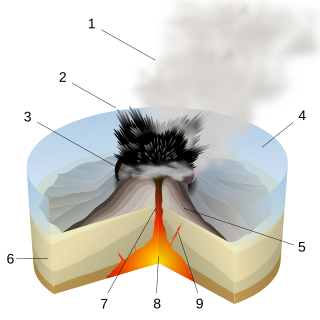
A Surtseyan eruption is an explosive style of volcanic eruption that takes place in shallow seas or lakes when rapidly rising and fragmenting hot magma interacts explosively with water and with water-steam-tephra slurries. The eruption style is named after an eruption off the southern coast of Iceland in 1963 that caused the emergence of a new volcanic island, Surtsey.

Hunga Tonga–Hunga Haʻapai is a submarine volcano in the South Pacific located about 30 km (19 mi) south of the submarine volcano of Fonuafoʻou and 65 km (40 mi) north of Tongatapu, Tonga's main island. It is part of the highly active Kermadec-Tonga subduction zone and its associated volcanic arc, which extends from New Zealand north-northeast to Fiji, and is formed by the subduction of the Pacific Plate under the Indo-Australian Plate. It lies about 100 km (62 mi) above a very active seismic zone.
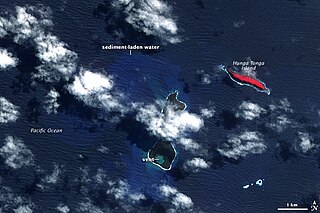
The 2009 Tonga undersea volcanic eruption began on 16 March 2009, near the island of Hunga Tonga, approximately 62 kilometres (39 mi) from the Tongan capital of Nukuʻalofa. The volcano is in a highly active volcanic region that represents a portion of the Pacific Ring of Fire. It is estimated that there are up to 36 undersea volcanoes clustered together in the area.
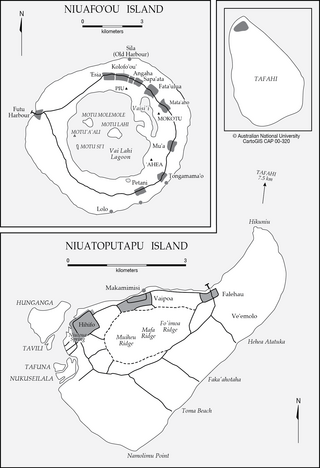
Niua is a division of the Kingdom of Tonga, namely the northernmost group of islands. It consists of three islands which together have an area of 71.69 km2 and a population of 1,150. The largest village is Hihifo on Niuatoputapu. Piu'o Tafahi is the highest point with an elevation of 560 m.
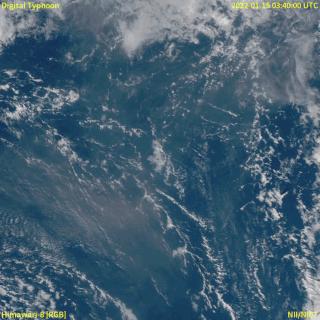
In December 2021, an eruption began on Hunga Tonga–Hunga Haʻapai, a submarine volcano in the Tongan archipelago in the southern Pacific Ocean. The eruption reached a very large and powerful climax nearly four weeks later, on 15 January 2022. Hunga Tonga–Hunga Haʻapai is 65 kilometres (40 mi) north of Tongatapu, the country's main island, and is part of the highly active Tonga–Kermadec Islands volcanic arc, a subduction zone extending from New Zealand to Fiji. On the Volcanic Explosivity Index scale, the eruption was rated at least a VEI-5. Described by scientists as a "magma hammer", the volcano at its height produced a series of four underwater thrusts, displaced 10 cubic kilometres (2.4 cu mi) of rock, ash and sediment, and generated the largest atmospheric explosion recorded by modern instrumentation.
Volcano F is a submarine volcano in the Tonga Islands of the South Pacific Ocean. It is located 50 km (31 mi) northwest of Vavaʻu, between Late and Fonualei on the Tofua ridge. It is part of the highly active Kermadec-Tonga subduction zone and its associated volcanic arc, which extends from New Zealand north-northeast to Fiji, and is formed by the subduction of the Pacific Plate under the Indo-Australian Plate.

Curtis Island is an island in the southwest Pacific. It is a volcanic island which, together with neighbouring Cheeseman Island, belongs to the Kermadec Islands, an outlying island group of New Zealand. It is a volcanic island with a fumarolically active crater, while vegetated slopes are nested by seabirds. There are uncertain reports of eruptions and the island has been uplifted by about 18 m (59 ft) during the past 200 years.
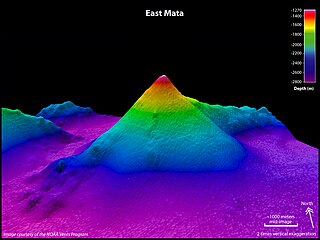
East Mata is an hydrothermally active submarine volcano located in the northeastern Lau Basin, right beside the far known West Mata volcano, which effusively erupted in 2009. It is located roughly 95 km (59 mi) north of Hihifo, Tonga. It can be found on the northern portion of the Tonga-Kermadec volcanic arc which extends from North Island of New Zealand all the way to Samoa. The volcano was discovered along with West Mata and other volcanoes in 2008 by a team of NOAA scientists when they visited the region in a research vessel.
References
- ↑ "Curacoa". Global Volcanism Program . Smithsonian Institution . Retrieved 2010-02-27.
- ↑ "Lateiki: Tonga's new jack-in-the-box island". Pacific Islands Monthly. Vol. 50, no. 11. 1 November 1979. pp. 30–33. Retrieved 24 December 2021– via National Library of Australia.